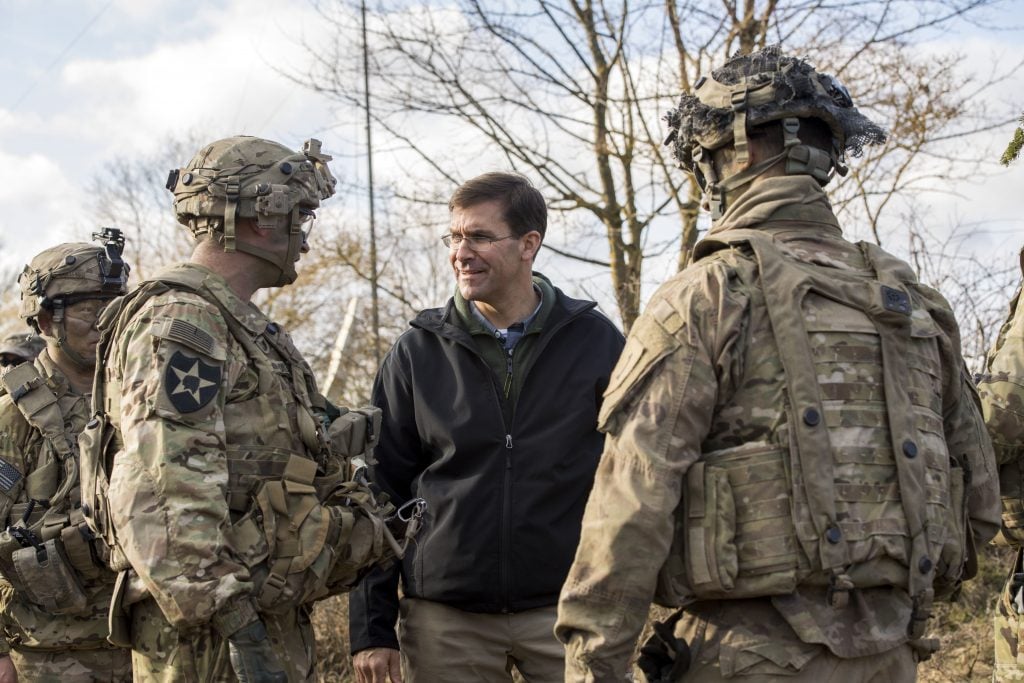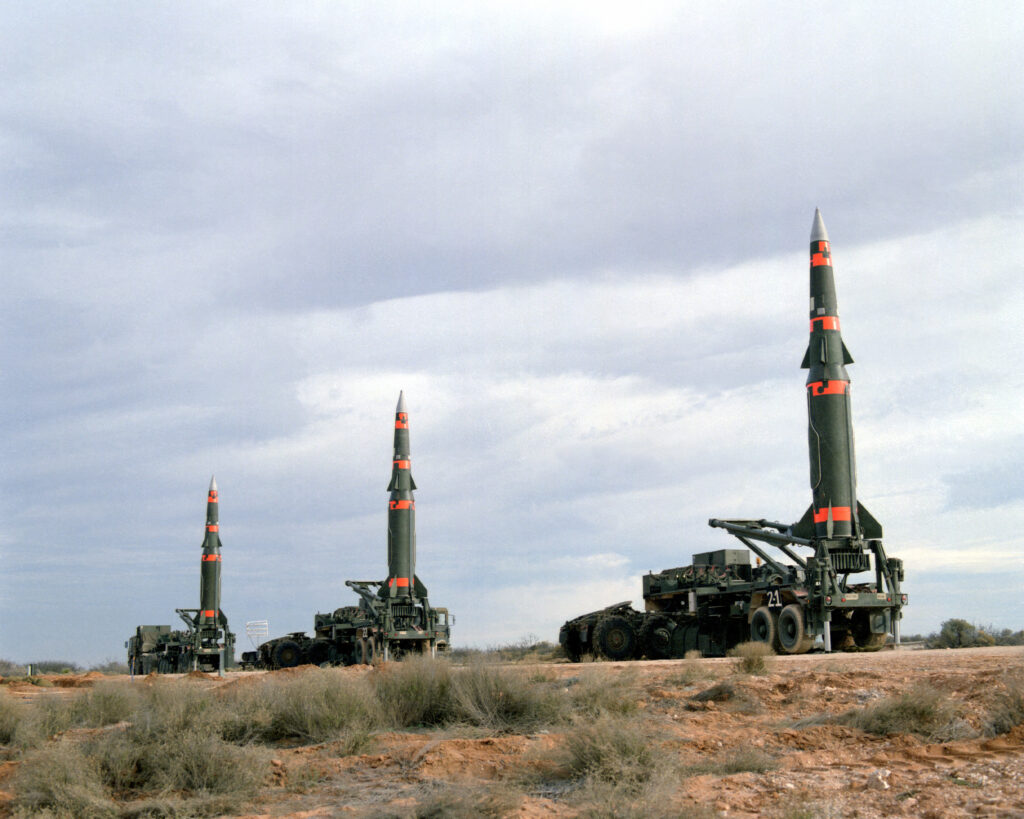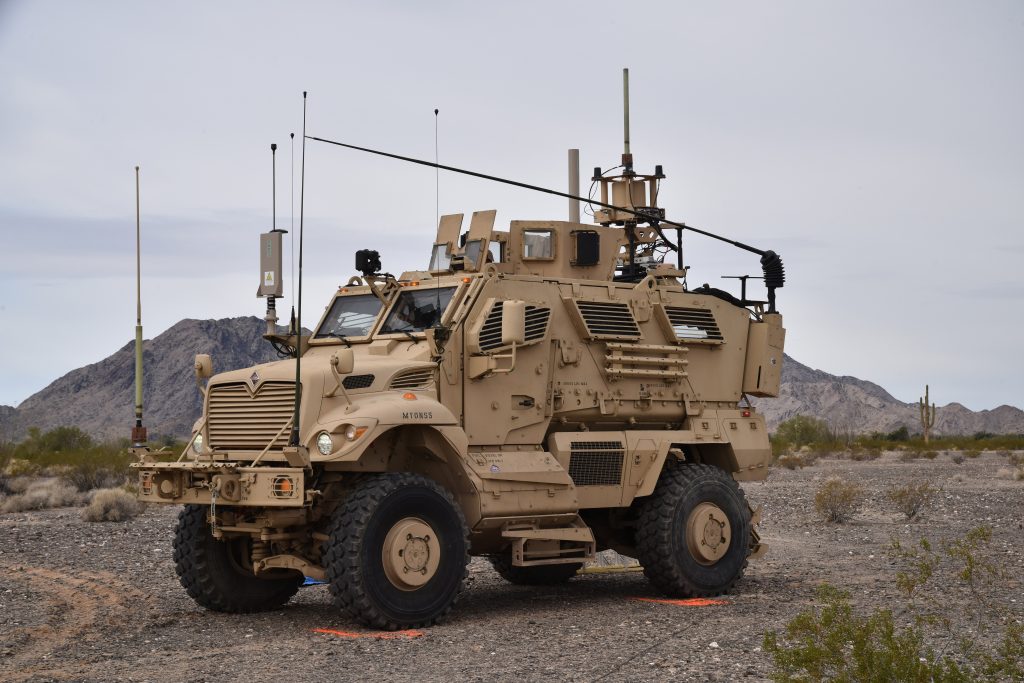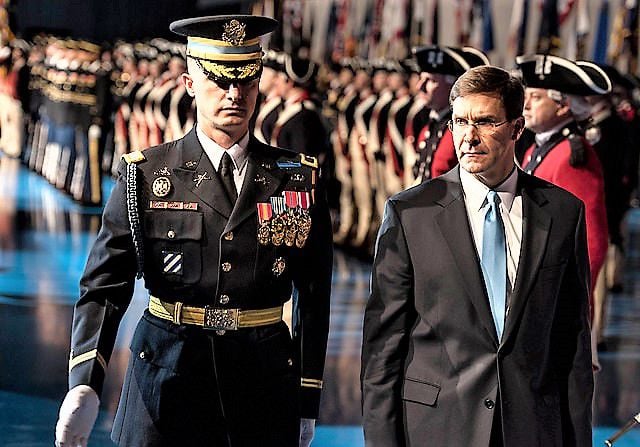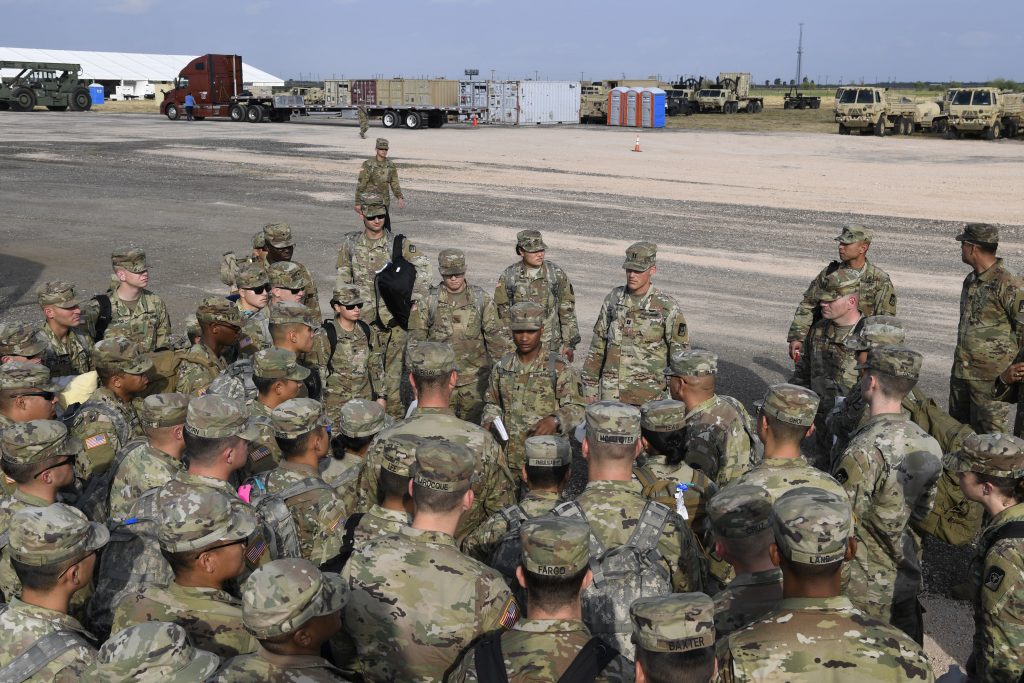Trump Cuts, Democrats Won’t Stop Army Modernization, Growth: Reading Between Sec. Esper’s Lines
Posted on
WASHINGTON: The Army Secretary stuck to his expensive guns today — new high-tech weapons and over 500,000 regular active-duty soldiers — despite the Democrats’ takeover of the House and President Trump’s pledge to cut defense spending $33 billion.
“We’ll see what the topline eventually becomes and then we’ll have to see what the Army’s share of it is,” Mark Esper said this morning at the American Enterprise Institute. “This needs to play out a little bit more, and then Congress will have a say as well.”
Sec. Esper didn’t sound at all like someone resigned to his own administration’s $700 billion figure become law — or even to it becoming the final President’s Budget proposal due in February. Nor did he even mention how a Democratic House, with its emphasis on social spending over defense, could cramp the Pentagon’s style. The defense budget may be caught between doves on the left and budget hawks on the right, but so far Esper isn’t ceding any ground.
At the same time, the Secretary has been warning for months of a potential spending slowdown in 2020, when the Budget Control Act caps will return in force without another budget deal, and he’s been getting ready by relentlessly scrubbing the Army budget. The goal: Free up “billions” in funding — and for that matter thousands of personnel — from lower-priority programs, overhead activities, and organizations to spend on near-term combat readiness and long-term modernization.
“Our priorities for the near term will remain readiness, No. 1, and then, second, modernization,” said Esper. “That means no matter happens we’re going to protect … those six modernization priorities, and we’ll have to just go back and do more cutting, reducing, or consolidating what’s on the bottom of that one through n list in terms of Army programs.”
Long-Range Missiles & The INF Treaty
The top priority of the Big Six is smart artillery, what the Army calls Long-Range Precision Fires. “Throughout history … whether it’s the longbow or TOW missiles … the more range you have the better,” Esper said. In particular, he said, long-range, ground-based weapons are “crucial to Multi-Domain Operations,” the new inter-service concept for coordinated attacks from all directions — land, sea, air, space, and cyberspace.
The Army was already pursuing new howitzers, rockets, and missiles for different ranges, including 1,000-mile “strategic fires” that use exotic technologies like hypersonics and super-cannon to bypass INF Treaty restrictions on intermediate-range (310-3,400 mile) ballistic and cruise missiles. Now that Trump has pledged to withdraw from INF over persistent Russian violations, Esper said, the Army is able to explore traditional missiles for those missions as well.
Once again, though, the secretary sounded cautious about whether his own administration’s declared policy would come to pass. The Army will pursue these currently-banned technologies, he said, “if and when the INF Treaty is lifted.”
Jamming, Jamming
Esper also spoke more enthusiastically than I’ve ever heard him before on rebuilding a long-neglected Army capability, electronic warfare.
EW is a crucial complement to long-range firepower: Your missile launchers can’t find any targets to shoot at if the enemy shuts down their communications with satellites, scout aircraft, and spotters. You also want to jam and hack the enemy’s network before he can do the same unto you, especially given massive Russian and Chinese investments in non-nuclear, precision-guided missiles. But while Army hackers have benefited from two administration’s of intense investment in cyber warfare, and defense against electronic warfare has a clear place in the Army’s Big Six under priority no. 4, the network, offensive electronic warfare has struggled to get top-level attention. Now it seems it has Secretary Esper’s.
Asked this morning about growing the Army, Esper mentioned three times in quick succession how the electronic warfare corps was one of the crucial capabilities to rebuild. When I pushed him further during Q&A, he said flat-out that “we want to restore EW capability, both offensive and defensive” (emphasis ours).
“We’re looking at putting EW capabilities back into multiple levels of the Army: brigade, division, and corps,” Esper said. It’s the highest-level endorsement so far of a plan mid-ranking officers outlined to me in an interview over a year ago. In addition, the secretary said, “we’re building special teams,” although he declined to give any additional details.
More Soldiers For Major War
Esper’s most expensive proposition, however, is probably not new technology but additional people. Even though manpower is already the Army’s biggest single expense by far, the secretary stuck by his past statements that the Army needs to grow gradually from just over 476,000 regular active-duty soldiers today to somewhere above 500,000 by 2028, with “proportional” growth in the National Guard and Reserve.
If that sounds vague — and Esper rebuffed requests for more details this morning — it’s because the Army is still figuring out how many troops it needs for future large-scale wars against high-tech great powers.
“It needs to be informed by the future of warfighting,” Esper said, which brings us back to that rapidly evolving but still vague concept of multi-domain warfare. “What Multi-Domain Operations will do is inform us as to the types of formations we need — how much infantry, how much armor, how much electronic warfare, etc. etc.,” Esper said. “Today we’re organized around the brigade; we may go back to the division or we may go to a new structure….. It’s going to take some time to work that out, a couple of years or so.”
“Until we have that,” he went on, “I know I need to at least be above 500,000 (to fill) the holes I have in the force right now; (restore) the capabilities I want to put back into the force such as EW, electronic warfare, such as long-range artillery; and (add) the new capabilities I need to put into the force such as cyber.”
From Afghanistan To Arizona
A larger force will also help spread the burden of continuing deployments overseas — and now to the southern border as well. “We are still a nation at war,” Esper said, noting the death of Maj. Brent Taylor, a Utah National Guard officer with four previous deployments, just days ago in Afghanistan.
Even when no one’s shooting at you, frequent deployments wear down soldiers, their families, and — in the case of the Reserves and Guard — their civilian employers as well. The average soldier spends only 40 percent more time at home than on deployments, a 1.4:1 ratio that falls far short of the Army’s goal of 2:1.
“There is a good deal of stress on the force, much more than I think most Americans realize,” Esper said. “At any one time I have five brigade combat teams deployed, to Africa, Europe, Korea, the Middle East, and Afghanistan.”
What about the border, where the Trump Administration is deploying over 7,000 active-duty troops, the vast majority from the Army?
Esper downplayed any negative impact. Packing up on short notice, deploying by rail or road, and setting up operations in unfamiliar territory is good practice for Army units, he argued, which must deploy long distances to missions overseas. What’s more, since the troops deployed don’t come from combat units, but from support forces, they’re supporting Homeland Security by doing the same jobs they’d need to do in war: engineers building barriers, medics providing care, helicopter crews providing transport, logisticians providing supplies, and so on.
“Time will tell,” Esper said. “I don’t see necessarily … a degradation in readiness.”
Subscribe to our newsletter
Promotions, new products and sales. Directly to your inbox.

